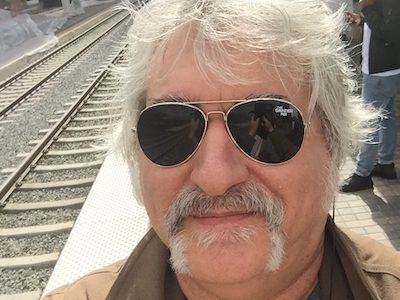Meet the Background Actors Who Populate HBO’s “Perry Mason” – Part II
In Part I of our deep dive on the extras—properly known as background actors—in HBO’s Perry Mason, costume designer Emma Potter’s revealed just how much work goes into the wardrobes of folks we often only see on screen for only a matter of seconds. Potter’s approach to the design of the costumes for Perry Mason’s background actors was based on both her research and the sense of Los Angeles in 1932 that she got from reading the scripts for the first time. “You could tell that our main characters were so very closely woven into the tapestry of the people around them and the city they were in,” she says. “My first talks with Tim [Van Patten] were about the idea of the city itself as a character. He wanted a visceral sense of what it was like to live and be in L.A. at this time. It was a very uncomfortable time, and he wanted that sense,” even portrayed in the clothes people wore.
The designer looked at photos from the period, especially those by photographer Dorothea Lange, instead of at fashion books of the day where everyone appeared unrealistically beautiful. “The people you see in those moments, like in our story, were woven into the fabric of the city.” She and her team crafted large boards with visuals of each neighborhood in which the story would be placed, which would be reviewed with Van Patten and the production designer.
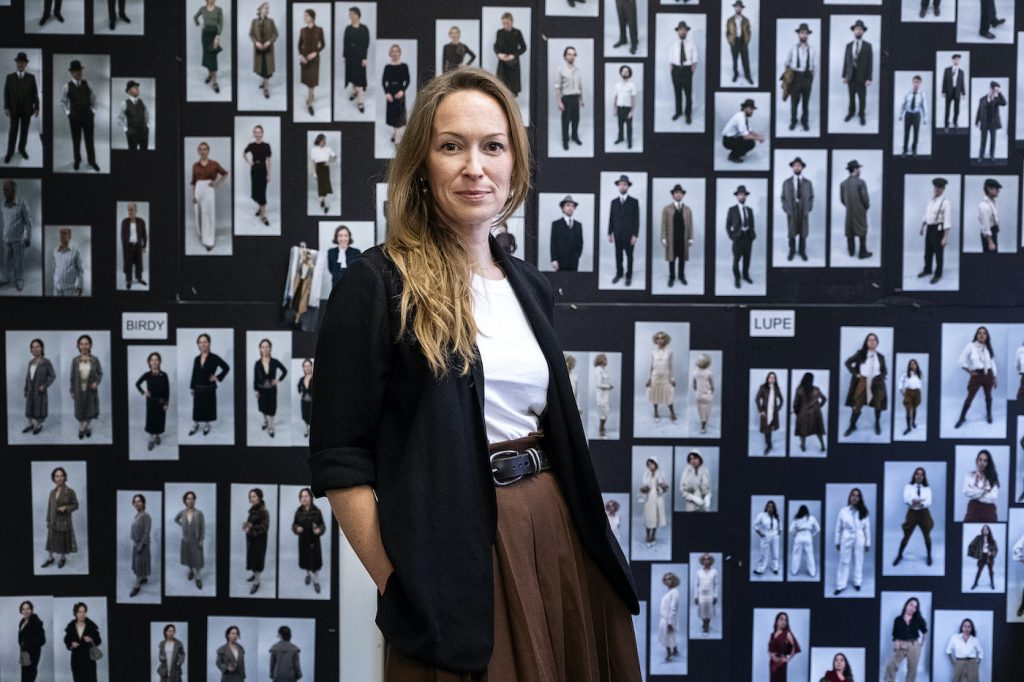
That approach weighed heavily on Potter, key second assistant director (2nd A.D.) Salvatore Sutera says. “We would bounce ideas off each other, go back and forth, in rounding out the scene. And she loved it. She’s creating a world, with both the principal actors and the background actors. She always made sure the look of the extras was appropriate and realistic.”
In developing her designs, Potter would put a look book together, essentially a mosaic of images of what she and the A.D.s wanted to see in any space, which Van Patten would then approve. And they also created vignettes, small stories, for each background actor. “Say, it was a street scene, where we see Perry walking,” she explains. “We would have a shopkeeper sweeping, or someone delivering something—and that would inform me on how to come up with the clothing, versus just going down a street with just a whole group of people in casual attire. There are all these little stories behind everything.”
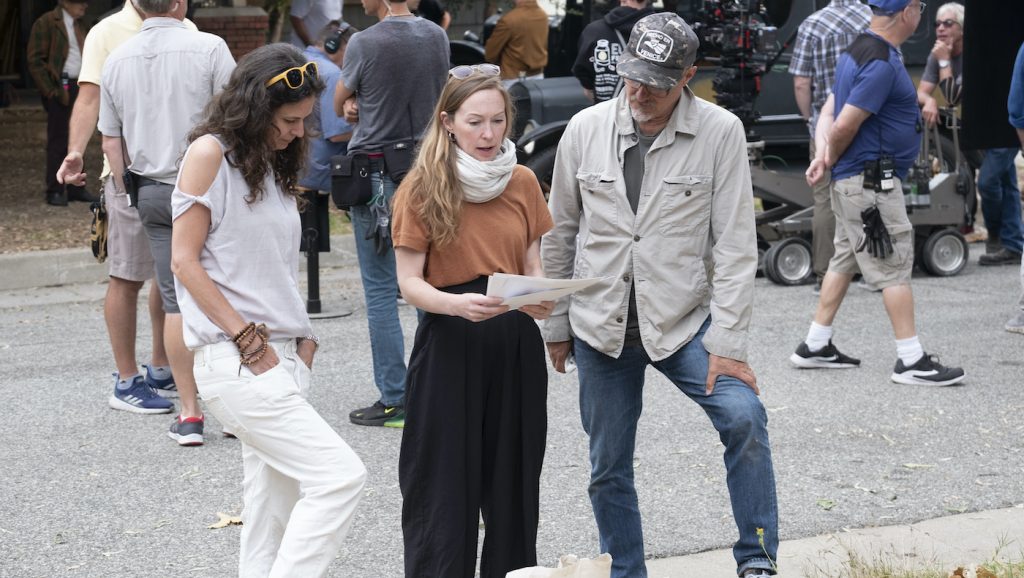
As described above, there were a large variety of appearances background actors would have, based on culture, class, and environment. Shorts and sandals were decidedly not the common modes of dress for men on the street of Los Angeles in the 30s. “People had limits to their wardrobe,” explains Makeup Dept. Head Christien Tinsley. “They usually had a pair of pants, a couple of nice shirts always pressed, and that’s what you wore.” People going to church, say, at the Radiant Assembly, Potter notes, “For those people that could afford to have clothing, they would have options for their Sunday best,” with the poorer background characters dressed with whatever was the best they had to pay their respects.
And most of those suits and pants were made of wool. “I never realized how much wool there was!” laughs background actor George Zaver. “We had 90 degree days, and there were people wearing coats.” Notes second A.D. Mollie Stallman, “It never fails – we’d have to shoot summer scenes in mid-winter in L.A., and in July, we’d be doing winters scenes with people in wool suits and overcoats.”
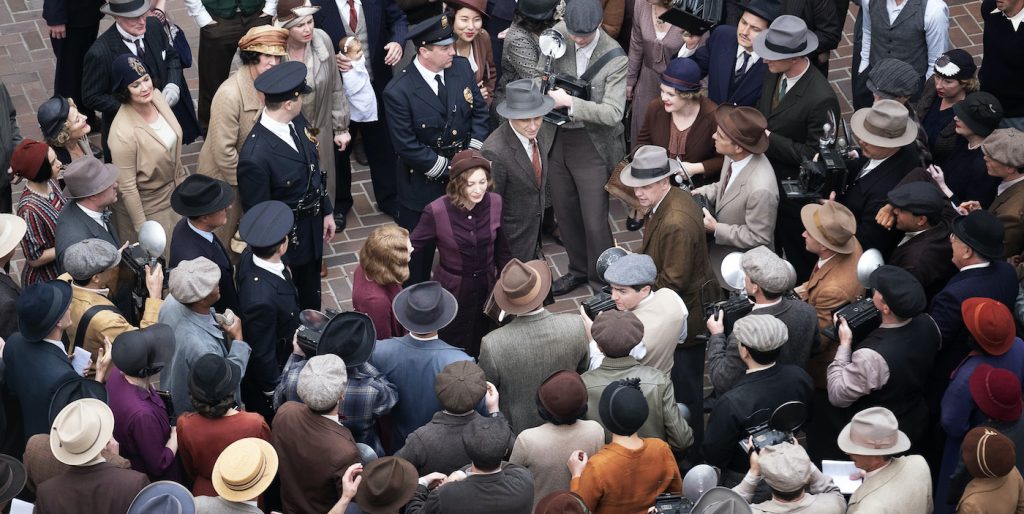
The costumes were, for the most part, literally vintage clothing sourced from vintage websites or stores. A good many were rented from Western Costume in North Hollywood, at which the Costume Dept. set up shop for fittings, once extras had been cast.
Extras Casting Director Rich King would provide lists of names of people who would be working weeks before, to Costumes, Hair and Makeup. Potter would then sit together with her Key Costumers, Angela Nunez and Emilea Rivera, and create multiple options for scenes for each player, prior to fitting. “I would show them the look books and say, ‘This is what I want for this world of background,’” creating designs for each background actor within each beat of the story, the designer explains. “And then, once they had the clothing from the shoppers, the costumers would do the fittings.” The background actors would come in, get fitted, and then are photographed, for approval by Potter and Van Patten.
One other activity took place at fittings at Western Costume: haircuts. “I would always have a barber there, so we could at least get some of the haircuts out of the way,” says Hair Dept. Head Miia Kovero. “That would save time, then, on the day of the shoot.” Notes James Tappan, who portrayed one of Sister Alice’s guards, “I’ve found, over the years, I get a lot of good haircuts out of this!”
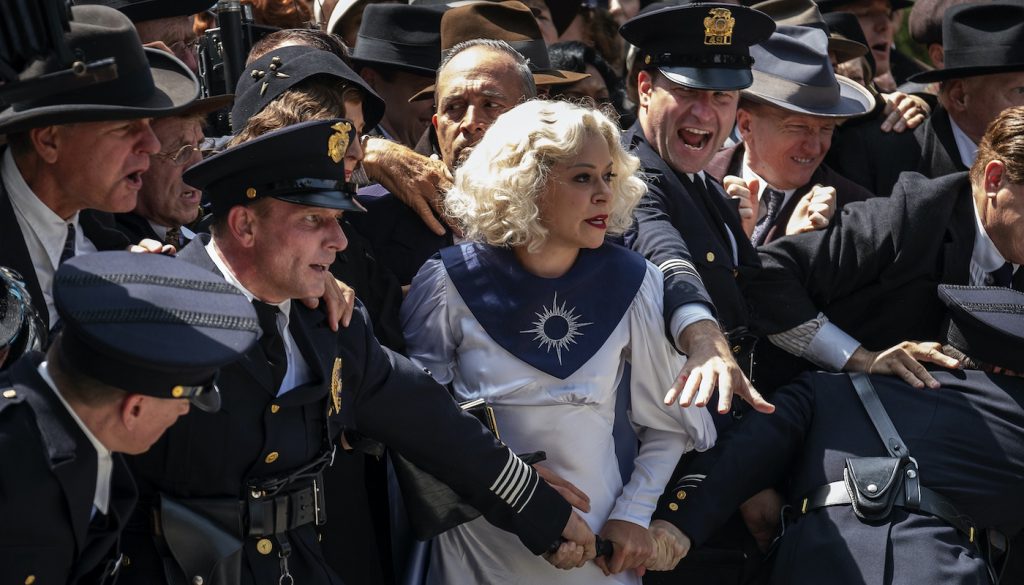
Men’s hair at the time, Kovero says, was “mostly tapered, like clean necks, with maybe 2 or 3 inches on the top,” with hair parted low or in the center. “With a period project, you can tell what year it is just by the haircuts.” The look of the day for women was chin to neck length hair. Many women wore hats, so their styling might be modified. And a good deal of the actresses were given wigs. “We used hundreds of wigs on background actors. We could just prep them beforehand, and just wrap the ladies’ hair underneath and plop the wig on. Which was often faster than somebody coming in with waist-length hair.” And, though hair straightening had arrived sometime around 1907, a good number of the show’s African-American background actresses were given wigs, especially if their own hairstyle was too modern.
Though somewhat uncomfortable, the effect of wearing true period clothing, even for background actors, is immeasurable. “It affects you instantly,” says Zaver. “You just feel different. All of a sudden, it creates the period. Everything was heavier on you. And, even in that sense, it just transported you. I’d even see one of the photographs they took of me in costume, and I would just think, ‘Wow – this doesn’t feel like I’m here.’” And finding oneself in a mob of like-dressed background actors just made it all the more real, until “Cut!” was called. “Then everybody pulls out their cell phone! I actually tried not to do that, and just thought, ‘I’ll do it during lunch.’ Cause it just kept me in the period.”
Some background also had props. Zaver, for instance, was given a vintage camera on set by the props department as he was portraying a press photographer. “They had a table of them, and you were given one, assigned a letter – ‘George, this is yours,’” which the props department crew would explain and teach him how to operate – even though there was no film.
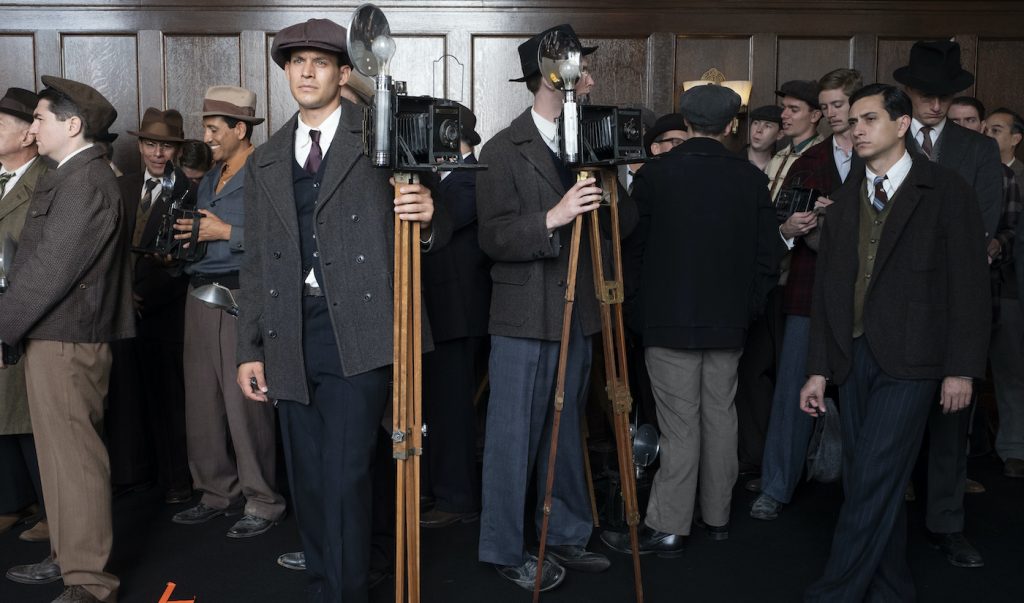
There were, however, flashbulbs, as was common then, each of which had to be removed and replaced for the next shot a photographer would take. The bulbs were hot, and even though Zaver was given a bag of bulbs to hang from his belt (as was the norm), a props department person would come after each shot and replace it for him. “They also told me, when I took a shot, to tilt the camera up, to avoid flashing the bulb in an actor’s face,” he notes, which would otherwise momentarily blind the performer.
Background actor Adyr Vallaviciencio’s wardrobe included hats. So, like any good actor, he did some homework about how to properly hold one. “I have a friend who’s a wardrobe stylist. And when I mentioned I was doing a period piece, and that I’d be carrying a hat, he told me, ‘Always put your hat close to your heart. And never show them the inside. Never tilt the fedora, unless you’re from a certain part of the city.’ And he told me to hide my cuffs inside my coat because you have to show your watch. The watch shows your status.”
He also studied the way men held themselves when standing or walking, in those days. “Men weren’t slouchers,” he says. “They stood up tall and proud as if they have to stay on their horse and never fall off. No loose hands, like I’m walking in a parade.”
Van Patten noted that, by the time the shoot was over, many of the background cast had truly absorbed the period. “By the end, they actually took on the physicality. They were chain-smoking!” he laughs.
As for makeup, Tinsley took his cues based on the background’s wardrobe, as well as what class of citizen they were portraying, time of their day, etc. A migrant worker, on his way home from work and just passing by, would be given an appropriate level of grime, while a lady out for a day’s grocery shopping would be more relaxed. “Unless it was a woman out shopping with a girlfriend, it was just a natural, non-made-up look, with no lipstick, etc.,” he explains.
People, he notes, tended to be groomed more frequently than we might see today. “And men were always clean-shaven, and probably got a haircut once a month.” Rarely would there be facial hair, except, perhaps, with older gentlemen. We would have about 5 to 10% of the men with facial hair. And the majority of those would be men over 45, perhaps in their 50s or 60s, who likely had a look that was popular when they were 30 – back in 1900.”
Rather than have individual makeup designs for each of 200 or 400 extras, Tinsley developed a palette of about 40 colors to be used on shooting day. “You have two hours, but you have to get 150 people through the works,” he says. “So we built a system that we followed diligently, in order to get to the subscribed look in a timely fashion.”
For more on our deep-dive into Perry Mason‘s background actors, check out parts III, and IV of this series.
Featured image: Tatiana Maslany is Sister Alice in ‘Perry Mason.’ Photo by: Photograph by Merrick Morton/HBO


